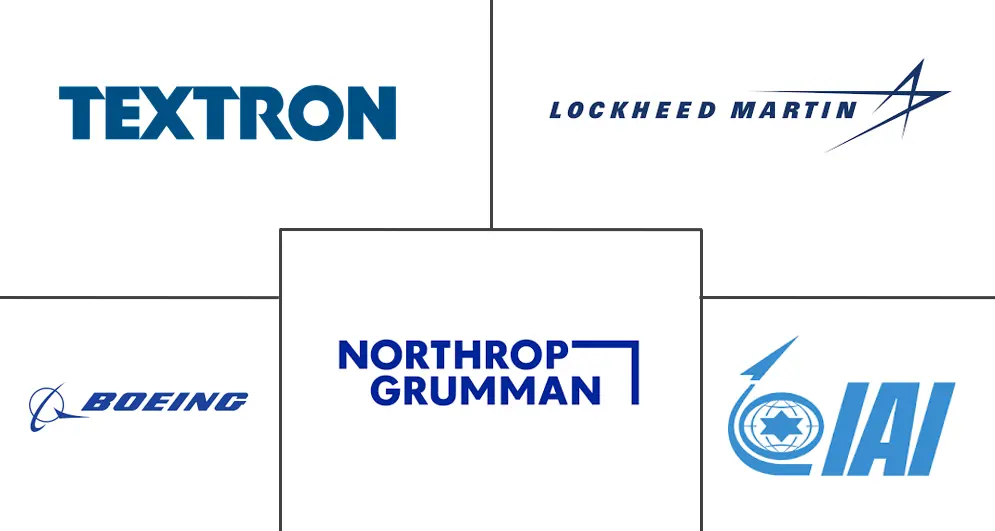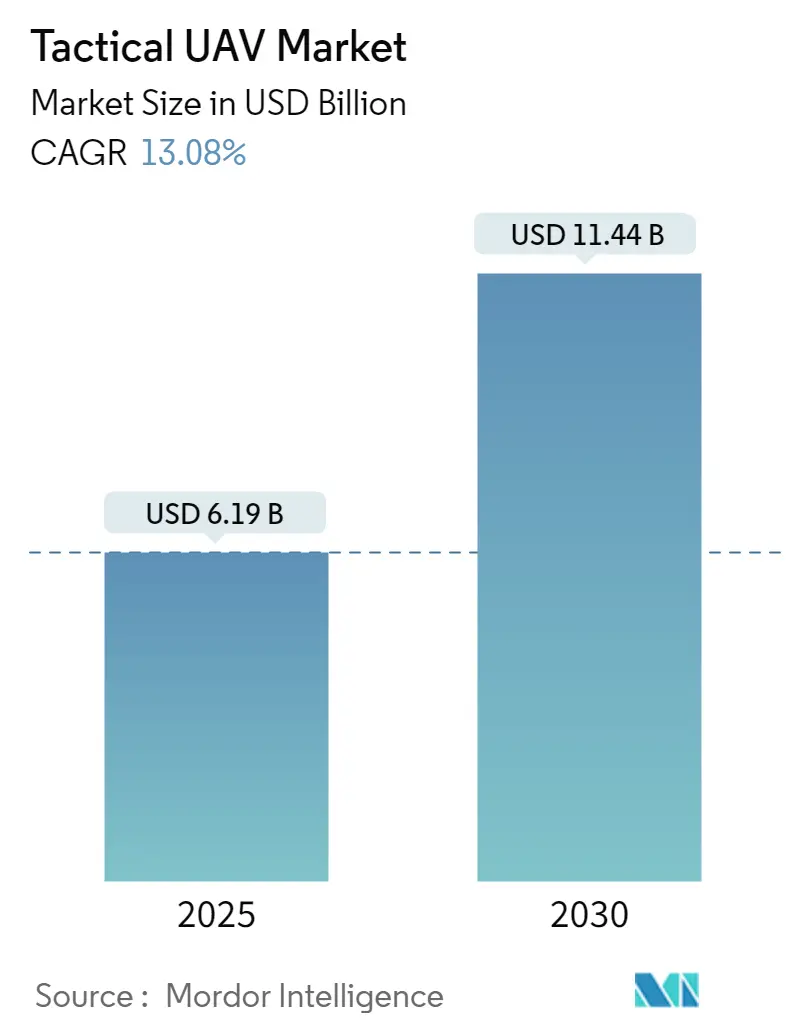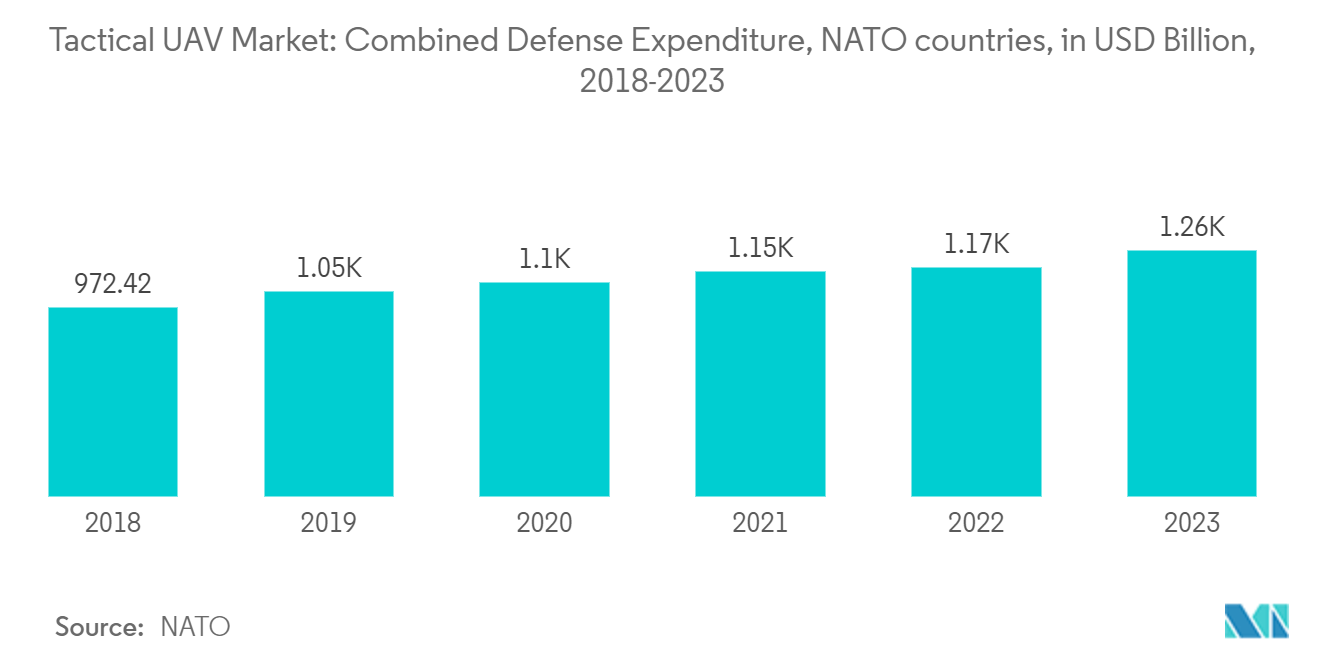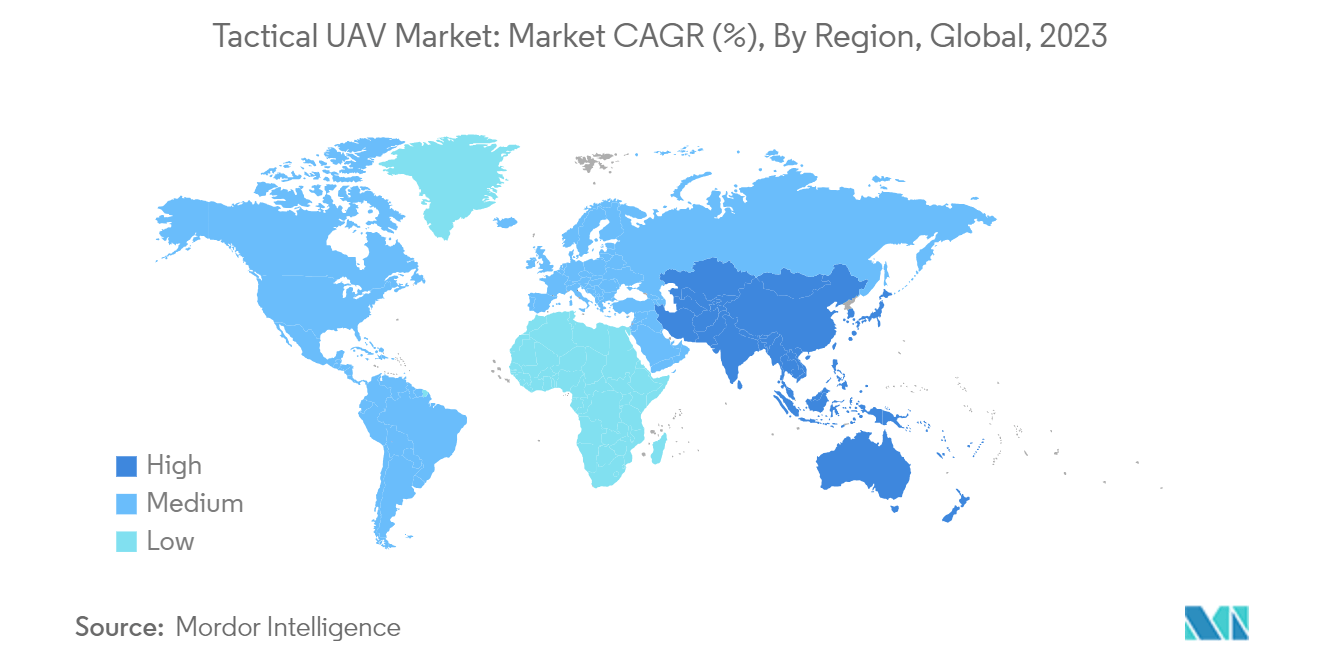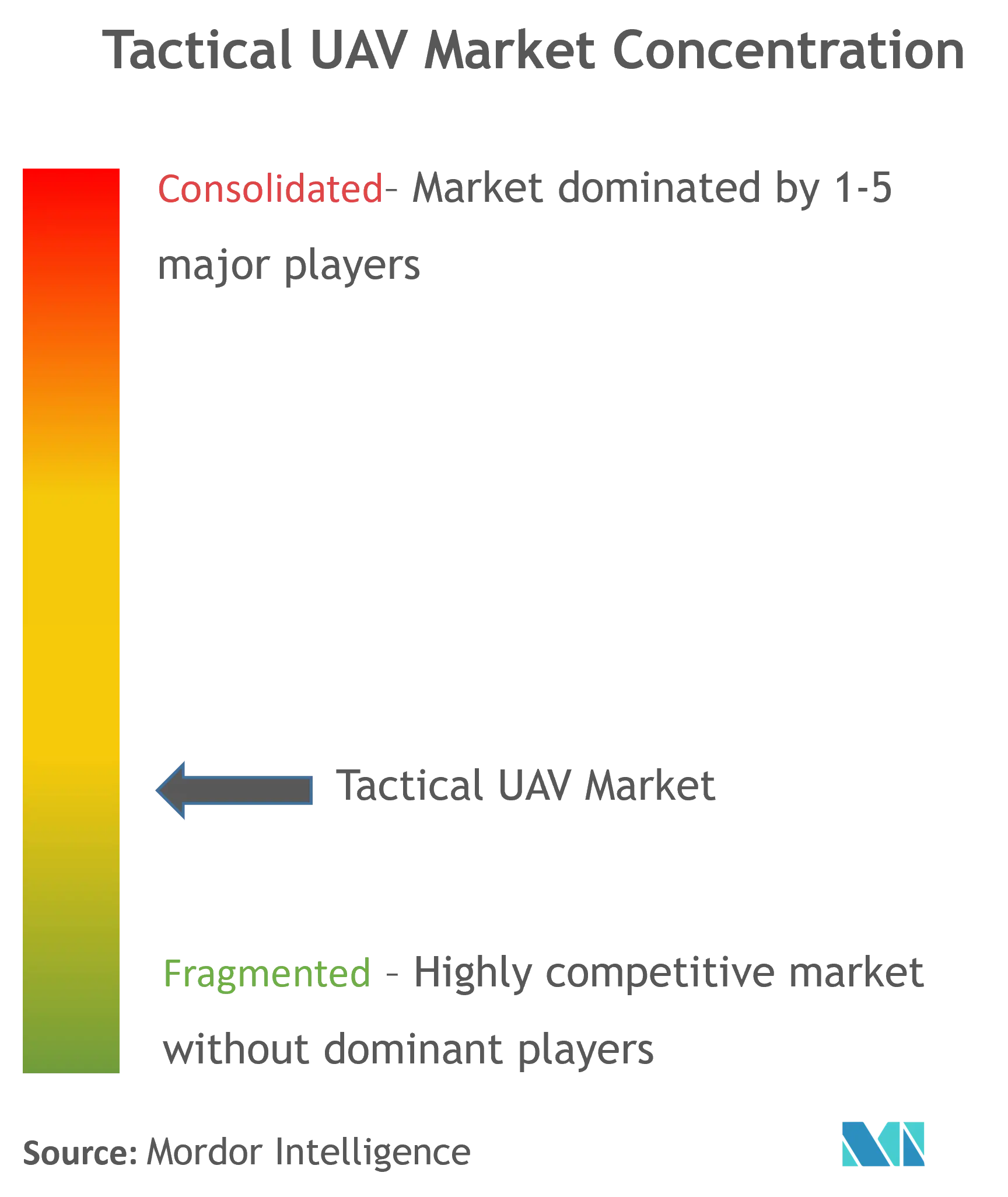Tactical Unmanned Aerial Vehicle (UAV) Market Analysis
The Tactical UAV Market size is estimated at USD 6.19 billion in 2025, and is expected to reach USD 11.44 billion by 2030, at a CAGR of 13.08% during the forecast period (2025-2030).
To succeed in critical military missions, real-time information can be the most powerful weapon for warfighters, commanders, and troops to protect themselves. Hence, the armed forces are tailoring their response to the threat using superior tactical intelligence, surveillance, and reconnaissance. This is generating the demand for tactical UAVs from the armed forces worldwide.
Several UAV manufacturers are developing newer generation tactical UAVs with an advanced payload of electro-optical or infrared sensors, with capabilities to transmit live video and other invaluable information that can empower troops. Major opportunities for OEMs remain in multi-role UAV platforms capable of performing a variety of missions, including reconnaissance, surveillance, and strike missions. There is a growing demand for UAVs for civilian applications, such as disaster response and infrastructure inspection, which can open revenue streams for UAV manufacturers.
The primary challenge for tactical UAV adoption is regulatory constraints and airspace integration. Regulatory hurdles, such as restrictions on flight altitudes and airspace access, can hinder the adoption of tactical UAVs in a few countries.
There is continuous advancement in the autonomy and intelligence capabilities of UAVs. Tactical UAVs are becoming increasingly autonomous and able to perform complex missions with minimal human intervention. This advancement in autonomous technology is driven by the need for more efficient and effective military operations and advancements in artificial intelligence and sensor technologies. There is a shift in demand toward smaller, more agile UAVs that can be deployed instantly and can operate in challenging environments.
Tactical Unmanned Aerial Vehicle (UAV) Market Trends
The Military Segment is Anticipated to Lead the Market During the Forecast Period
The increasingly diverse military applications and the requirement for highly effective and objective surveillance and reconnaissance for some of the most critical military applications are driving the highest demand from the military applications segment of the market. With increasing global unrest due to the ongoing conflicts between major global military superpowers, several militaries are focusing on expanding the fleets of their tactical UAVs to counter any adversary actions from enemies successfully.
Tactical UAVs are critical to ensure uninterrupted surveillance at the borders. Due to its diverse application profile, the demand for tactical UAVs has witnessed a multifold increase during the last decade. Hence, several procurements are underway or being placed to cater to the increased demand from global military forces. For instance, in May 2022, Switzerland received the first two of six Elbit Systems' Hermes 900 unmanned aerial systems from Israel. The country would receive four other drones by the end of 2023.
Border patrol and air surveillance are other critical areas of application for these drones, driving the demand for tactical drones. For instance, in March 2022, Saudi Arabia's Intra DefenceTechnologies unveiled its Samoomtactical MALE UAV, with the design to be optimized for intelligence, surveillance, and reconnaissance tasks. The Saudi Armed Forces anticipated becoming the first customer of the drone.
In October 2022, to bolster the surveillance system on the northern border, the Indian Army floated tenders to procure 750 remotely piloted aerial vehicles or drones along with complete accessories through a fast-track procedure under emergency procurement. Such developments are expected to drive the market for tactical UAVs in the military sector in the coming years.
Asia-Pacific will Experience the Highest Growth During the Forecast Period
Asia-Pacific is expected to register the highest growth and demand during the forecast period due to increasing R&D activities and increasing procurements by countries in the region. The increased purchase of drones for major tactical applications has increased the demand from various countries involved in developing these drones. The rising emphasis on effective border patrol and maritime patrol used by naval forces has increased the demand for tactical drones in these applications.
As Asia-Pacific has been witnessing rapid economic growth and geopolitical tensions, governments are investing in advanced military technologies, including UAVs. Countries like China, India, Japan, Taiwan, and South Korea have made significant strides in developing indigenous UAV capabilities. Ongoing territorial disputes and security challenges have further fueled the demand for UAVs for ISR purposes in Asia-Pacific.
In June 2022, the Taiwan Army purchased 50 short-range tactical UAVs to improve joint battalion reconnaissance capabilities. The Army prepared a budget of TWD 779.98 million (USD 26.5 million) from 2020 to 2023 to acquire 14 UAVs in 2022 and 36 sets in 2023. In January 2022, Japan resumed its plan to procure Northrop Grumman's RQ-4 Global Hawk Drone in a deal worth USD 528 million. The RQ-4 Global Hawk is a High-Altitude surveillance drone to be stationed at the ASDF Misawa Air Base in Japan.
Currently, the Indian Defense Ministry is procuring high-tech UAVs to strengthen its ISR capabilities and improve the effectiveness of its military operations. In December 2023, Johnnette Technologies secured a contract from the Indian Army for its flagship tactical UAV “Johnnette JF-2” for border surveillance. The Johnnette JF-2 is India’s first crash-resistant drone. The Johnnette JF-2 is a hand-launched fixed-wing tactical UAV designed for surveillance and reconnaissance operations. The UAV is equipped with a high-definition day camera and a thermal imaging camera. The UAV also features a crash-proof avionics bay and anti-jamming and anti-spoofing capabilities, making it an ideal solution for military forces. India's tactical UAVs are currently being developed on a huge scale to support tactical units with very short ranges.
Tactical Unmanned Aerial Vehicle (UAV) Industry Overview
The market for tactical UAVs is fragmented, with several providers and UAVs that can be used for tactical and ISR missions. The key players in the market are The Boeing Company, Lockheed Martin Corporation, Northrop Grumman Corporation, Israel Aerospace Industries Ltd, and Textron Inc. These players are all major international companies trying to expand their presence and product portfolio by adopting different strategies.
Several UAV manufacturers are developing newer tactical UAVs with advanced payloads of electro-optical or infrared sensors and the capability to transmit live video and other invaluable information that can empower troops. For instance, in February 2024, Israel’s Elbit Systems unveiled the Hermes 650 Spark UAV. It delivers medium-altitude long-endurance (MALE) UAV capabilities and features eight modular storage stations and six hardpoints on the wings. This multi-payload capability integrates high-quality electro-optical sensors, radar, signals intelligence equipment, and advanced payloads.
The growing focus on the indigenous development of tactical UAVs is anticipated to help the advent of new players in the market. In recent years, several smaller players have constantly grown their market presence. They are expected to play a critical role in the future as their technology matures and gains flight hours while building technologies and capabilities made for their local users, including both military and non-military customers. For instance, in February 2023, Kalyani Group (India) unveiled its first foray into the unmanned aerial vehicle (UAV) sector at the Maharashtra MSME Defence Expo with the showcase of a new short-range tactical UAV.
Tactical Unmanned Aerial Vehicle (UAV) Market Leaders
-
The Boeing Company
-
Lockheed Martin Corporation
-
Northrop Grumman Corporation
-
Israel Aerospace Industries Ltd.
-
Textron Inc.
- *Disclaimer: Major Players sorted in no particular order
Tactical Unmanned Aerial Vehicle (UAV) Market Recent Developments
• September 2023: ISS Aerospace (UK) unveiled the tube-launched WASP M4-TL tactical UAS. WASP is man-portable and can be deployed in less than 3 seconds. The WASP is equipped with a high-performance gimbal-mounted EO/IR camera with a range finder and modular payload system of up to 1.5kg.
• June 2023: India’s DRDO (Defense Research and Development Organization) conducted trial runs for the indigenously developed TAPAS 201 Medium Altitude Long Endurance (MALE) UAV. TAPAS 201 can carry out missions both day and night and can carry combinations of payloads like Medium and Long-Range Electro-Optic, Synthetic Aperture Radar, Electronic Intelligence, Communication Intelligence, and Situational Awareness Payloads.
Tactical Unmanned Aerial Vehicle (UAV) Industry Segmentation
Tactical UAVs find their application in reconnaissance, surveillance, and target acquisition (RSTA). They can also be used in applications like target designation, strike, chemical-bio detection, mine countermeasures, theater air missile defense, electronic warfare, and information warfare.
The tactical UAV market is segmented by application and geography. By application, the market has been segmented into military, law enforcement, and other applications. The other applications include search and rescue and firefighting. The report covers the market sizes and forecasts for the tactical UAV market in major countries across different regions. For each segment, the market size is provided in terms of value (USD).
| By Application | Military | ||
| Law Enforcement | |||
| Other Applications | |||
| Geography | North America | United States | |
| Canada | |||
| Europe | United Kingdom | ||
| France | |||
| Germany | |||
| Rest of Europe | |||
| Asia-Pacific | China | ||
| India | |||
| Japan | |||
| South Korea | |||
| Rest of Asia-Pacific | |||
| Latin America | Brazil | ||
| Rest of Latin America | |||
| Middle East and Africa | United Arab Emirates | ||
| Saudi Arabia | |||
| Israel | |||
| Turkey | |||
| Rest of Middle East and Africa | |||
Tactical Unmanned Aerial Vehicle (UAV) Market Research FAQs
How big is the Tactical UAV Market?
The Tactical UAV Market size is expected to reach USD 6.19 billion in 2025 and grow at a CAGR of 13.08% to reach USD 11.44 billion by 2030.
What is the current Tactical UAV Market size?
In 2025, the Tactical UAV Market size is expected to reach USD 6.19 billion.
Who are the key players in Tactical UAV Market?
The Boeing Company, Lockheed Martin Corporation, Northrop Grumman Corporation, Israel Aerospace Industries Ltd. and Textron Inc. are the major companies operating in the Tactical UAV Market.
Which is the fastest growing region in Tactical UAV Market?
Asia-Pacific is estimated to grow at the highest CAGR over the forecast period (2025-2030).
Which region has the biggest share in Tactical UAV Market?
In 2025, the North America accounts for the largest market share in Tactical UAV Market.
What years does this Tactical UAV Market cover, and what was the market size in 2024?
In 2024, the Tactical UAV Market size was estimated at USD 5.38 billion. The report covers the Tactical UAV Market historical market size for years: 2019, 2020, 2021, 2022, 2023 and 2024. The report also forecasts the Tactical UAV Market size for years: 2025, 2026, 2027, 2028, 2029 and 2030.
Our Best Selling Reports
Tactical UAV Industry Report
The Tactical UAV Market Report offers a comprehensive industry overview and market analysis, highlighting key aspects such as market share, market size, and industry trends. This industry report is segmented by application, including military, law enforcement, and other applications, and by geography, covering North America, Europe, Asia-Pacific, Latin America, and the Middle East and Africa. The report provides valuable market data and industry statistics, helping to understand the market value and market segmentation in detail.
The industry research includes a market forecast outlook and market predictions, with a focus on market growth and the growth rate of the Tactical UAV market. The report also includes an industry outlook and market review, offering insights into market trends and industry sales. Additionally, the report highlights market leaders in the Tactical UAV sector and provides an industry analysis to support strategic decision-making.
For those interested in a detailed market report, the industry reports are available, including a sample report PDF download. This report example serves as a valuable resource for research companies and provides a thorough market overview. The report also includes industry information and industry size, ensuring that readers have access to comprehensive industry research and market insights.

